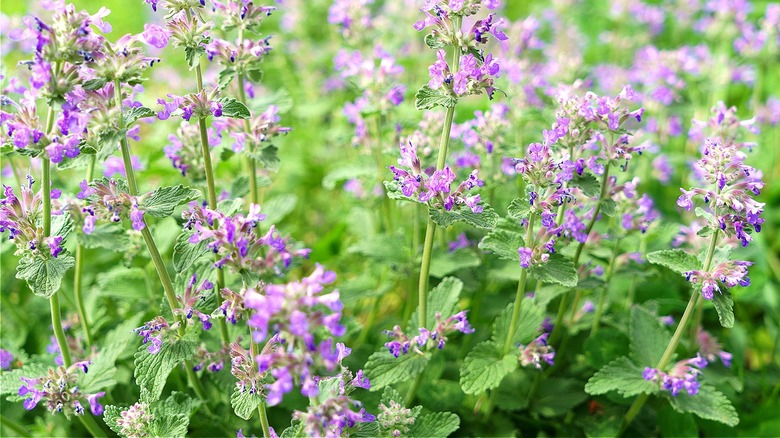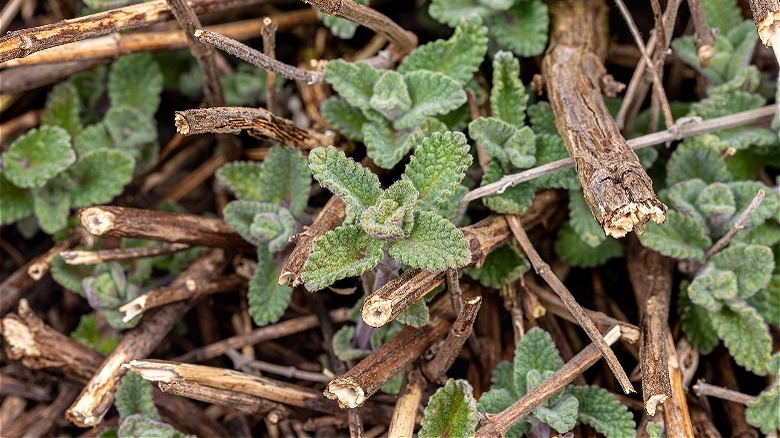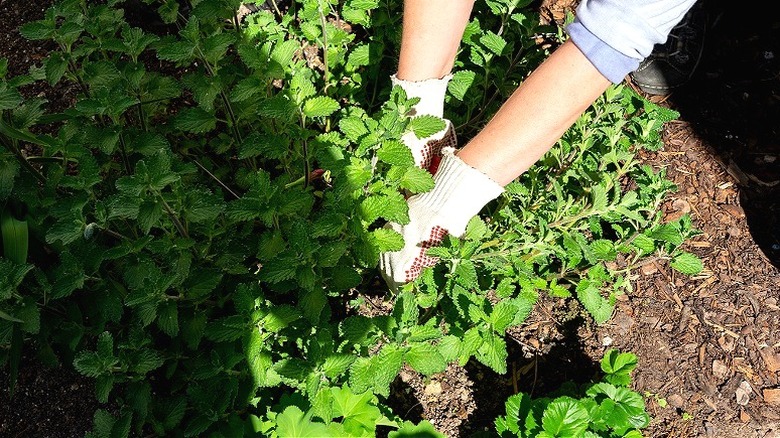When To Cut Back Catmint For The Healthiest Plant Possible
Named so for being a feline favorite, Catmint (Nepeta) is an aromatic perennial with stunning two-lipped lavender, white, or blue flowers. Commonly grown as a border feature or en masse in meadows and along garden walkways, its perfumed blooms will attract butterflies to your garden and deter squash bugs and aphids from invading your landscape. While catmint's vigorously spreading gray-green foliage is a sight to behold, it can get quite leggy and weedy, albeit without becoming invasive. So, cutting it back is necessary to minimize self-seeding and hopefully promote a second flush.
But that's not all. This deciduous woody plant browns and withers away during the fall season, requiring a second round of pruning to tidy it up. While you can choose to prune catmint immediately in October, it's best to delay the process until early spring to avoid reinvigorating winter growth and weakening the plant, risking frost damage.
When to cut back catmint
Despite being easy to care for, catmint requires regular pruning to maintain healthy growth. Although cutting it back at least twice yearly is ideal, you may want to remove the plant's damaged stems throughout the year to maintain a neat appearance. The first shearing, or "Chelsea Chop" should happen right after the woody shrub completes its first flowering cycle. Such early summer deadheading will push the plant to redirect its resources from seed production to reblooming — at least in some varieties. Moreover, as the top-heavy plant turns droopy on blooming, cutting it back should help it retain its posture and revitalize its bushy look.
The second round, or cleanup pruning, should happen around early spring, especially if you live in mild winter climatic zones, to stimulate new catmint growth. This will add visual interest to your lawn during the winter and take care of any overwintering fungal diseases and powdery mildew that can potentially hurt the fresh growth. However, if you dislike the messy, dead foliage aesthetic and live in cool temperatures, you can choose to shear the catmint during the fall.
How to cut back catmint
The first step to cutting back catmint is to pull out all damaged and diseased branches. To promote a potential second flush, prune all the plant's stems down to a third of their height. This will encourage new side shoot growth and give way to possible fresh blooms. It also prevents seed production, restricting the plant's spreading. You can alternatively shear off the catmint's flower spikes down to the first leaf to experience another flowering round. However, ensure the disinfected gardening tool is sharp to eliminate the risk of fungi infecting the ragged cuts.
If you're trimming catmint to prepare for the next season, lightly cut down the plant's dead stems, leaving behind around 4 to 6 inches of growth. This will keep the catmint plant insulated from severe winter and frost damage. You can follow the same procedure for spring cleanup. While this process should last you for around three to four years, consider dividing the plant in half and replanting it for better growth and blooms.


